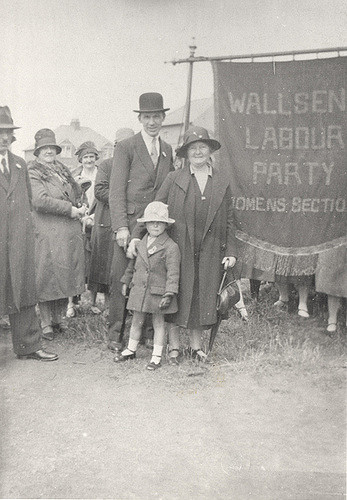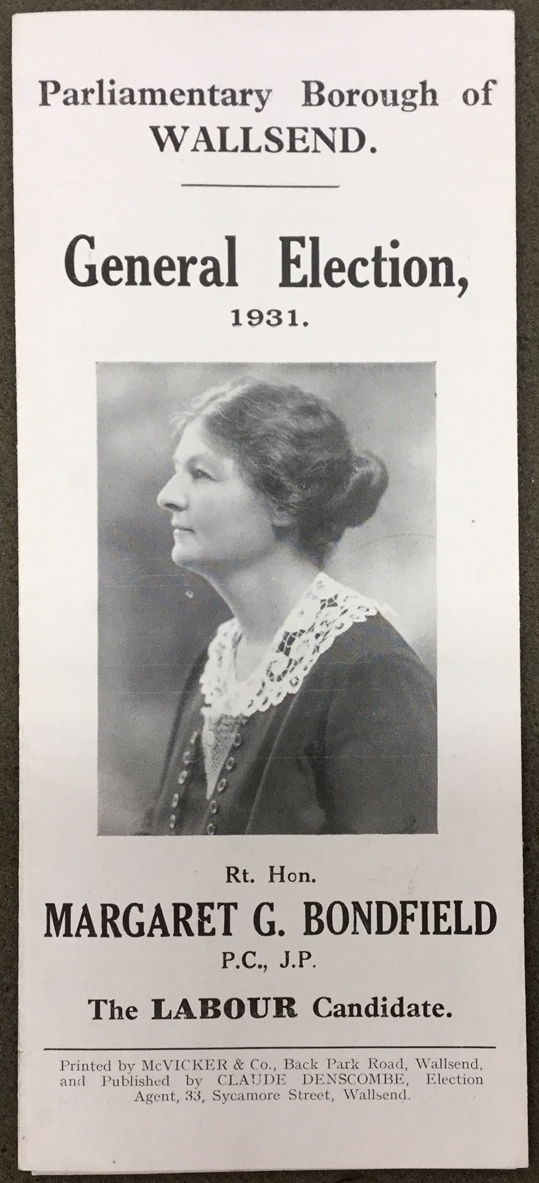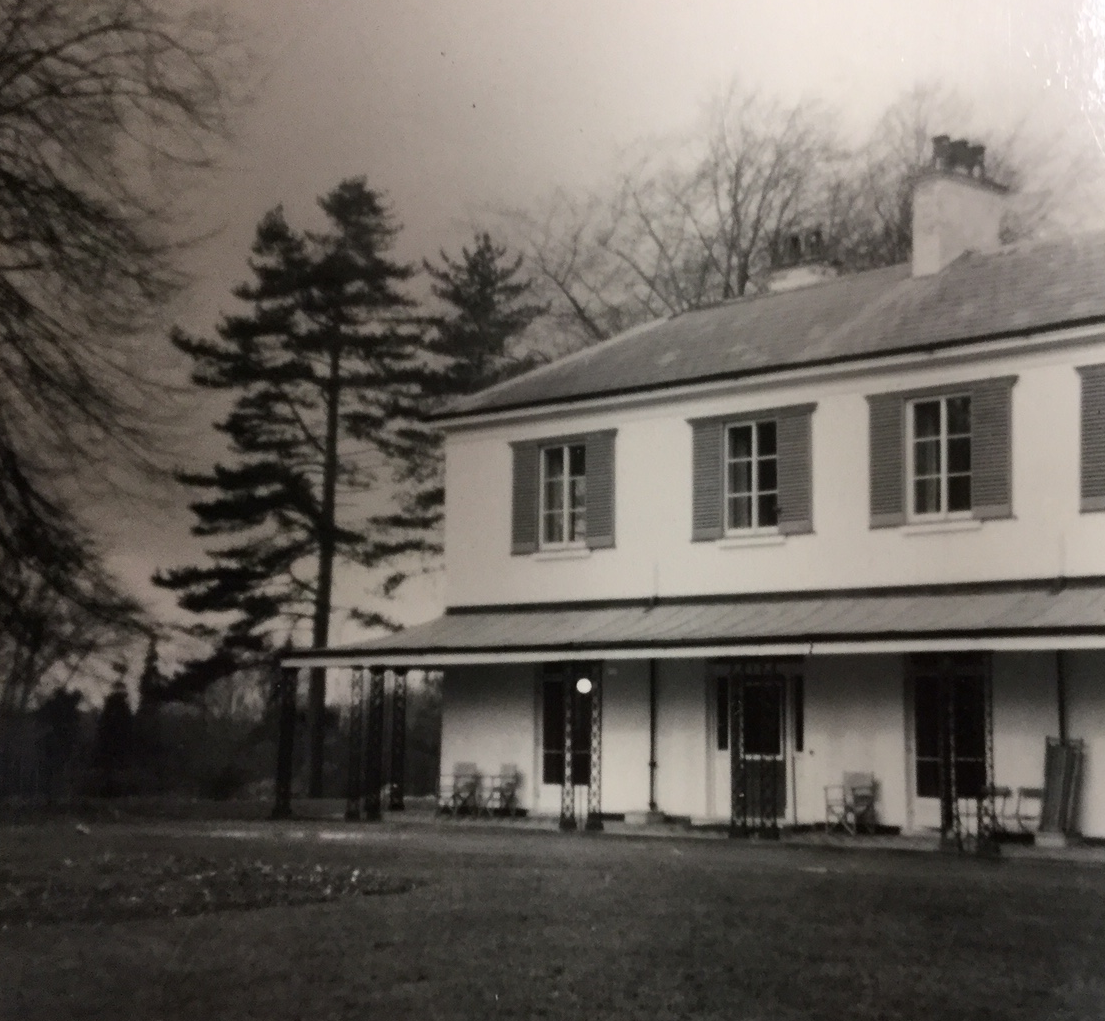In this new blog for our ‘Women and Parliament’ series, Dr Paula Bartley gives an overview of the political career of the first woman Cabinet Minister, Margaret Bondfield, who was appointed as such 90 years ago today. This blog is inspired by Paula’s research from her newly published book, Labour Women in Power, which examines the lives of Margaret Bondfield, Ellen Wilkinson, Barbara Castle, Judith Hart and Shirley Williams...
Ninety years ago, on this day Ramsay MacDonald appointed Margaret Bondfield as Cabinet Minister in his newly formed Labour Government. It was a momentous occasion. Whatever her future career, she would always hold the unique distinction of being the first ever woman Cabinet Minister. She was now the Rt Honourable Margaret Bondfield.

Reproduced courtesy of Vassar College

Born at the height of Victoria’s reign, the story of Bondfield’s life is the story of the rise of the ‘working woman to industrial and political emancipation’ (H. Tracey (ed), The British Labour Party, its History, Growth, Policy and Leaders), from the strictures of Victorianism to the so-called freedoms of the 20th century. At the time of her birth, March 17th 1873, no one could have predicted her rise to the top of the political tree. Born in Chard, Somerset, the tenth of eleven children, Bondfield started work aged 13 first as a pupil teacher then as a shop assistant. She was to have a stellar career in the trade union movement, helping Mary MacArthur to found the National Federation of Women Workers and being appointed first ever female Chair of the TUC.
In 1920 Margaret Bondfield – now in her early 50s – was sponsored by her union as parliamentary candidate for Northampton.

In 1923 Bondfield was elected, one of the first Labour women to gain a seat in the House of Commons. She was only in the post a few months when Labour was forced to call an election: Bondfield lost her seat. She was returned in 1926 in a by-election as MP for Wallsend.

reproduced courtesy of Vassar College
As the first woman Cabinet Minister Bondfield made a huge crack in the political glass ceiling. But would she fall off a glass cliff? Certainly it is argued that women who reach the top are often appointed to leadership positions which are doomed to fail. When she took office Britain was in financial difficulties, faced with large national debt and an increasingly lopsided balance of payments. Bondfield was given an impossible job: as Minister of Labour she was responsible for finding the money for unemployment benefits. Others, including Jimmy Thomas and Oswald Mosley were responsible for unemployment. Unfortunately for Bondfield the economy worsened. The Labour Party had only been in office for a few months when the Wall Street Crash precipitated a world-wide economic crisis. Unemployment soared.
Bondfield had the unenviable task of asking Parliament to increase the borrowing limit to fund unemployment benefits: in April 1930 she asked to increase the limit from £40 to £50 million, in July to £60 million, in December to £70 million. In February 1931 Bondfield asked for £90 million. This still wasn’t enough and in June 1931, with unemployment now reaching 3 million, Bondfield asked for it to be raised again to £131 million. It was, in the words of one Cabinet Minister, ‘like trying to stop an incoming tide with sandbags’(J. R. Clynes, “The Years 1929-31”, quoted in H. Tracey, The British Labour Party, Its History, Growth, Policy and Leaders).
There was widespread demand for a drastic reduction in national expenditure. Day after day, stories of alleged abuse appeared in the newspapers and applicants for unemployment benefits were accused of claiming falsely or unjustifiably. The Chancellor of the Exchequer Philip Snowden insisted that Bondfield reduce the costs of unemployment benefits. After a series of meetings and two governmental reports Bondfield took what she thought was the least offensive option and cut benefits for all married women. It was a tough decision: she was a feminist and had spent all her life fighting for the rights of working class women.

reproduced courtesy of Vassar College
More tragically Bondfield’s economies did little. Unemployment continued to rise and borrowing continued to increase. And so the Chancellor pushed for further reductions in benefits and pay: 10% cuts in unemployment benefits; a 20% cut in the salaries of teachers and cuts in the pay of police officers and other state employees. Bondfield supported the government. She agonised over it but the stand she eventually took was prompted by personal and ministerial loyalty to MacDonald and the Labour government.
It’s a long story, but basically, the whole Cabinet did not agree with the austerity proposals, MacDonald asked his Cabinet to resign and formed a National Government. Margaret Bondfield did not join it. But the damage to Bondfield’s reputation had been done. Sadly her willingness to cut unemployment benefits outweighed her previous labour campaigning for workers’ rights. When Ramsay MacDonald called for a General Election, Bondfield campaigned hard: leaflets were distributed and she spoke to as many of the electorate as she could. It was no use. MacDonald’s National Government won a landslide victory, all at the expense of Labour which won a humiliating 52. It was a crushing defeat. All nine Labour women MPs, including Bondfield, lost their seats.

Margaret Bondfield never sat in the House again. She may have broken through that glass ceiling but she had, in the interests of stopping the glass cliff from shattering, slipped off it. In 1953 Bondfield died in a nursing home in Surrey aged 80, largely forgotten, having spent her last years in this home run by the Friends of the Poor.
PB
Further Reading:
- Paula Bartley, Labour Women in Power: Cabinet Ministers in the twentieth century (Palgrave Macmillan, 2019)
- Margaret Bondfield, Hansard, December 1st 1930, vol. 245, cc. 1827-952.
- H. Tracey (ed), The British Labour Party, its History, Growth, Policy and Leaders (Caxton, 1948)
For other blogs in our ‘Women and Parliament’ series click here.
